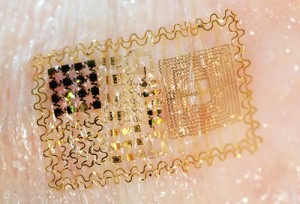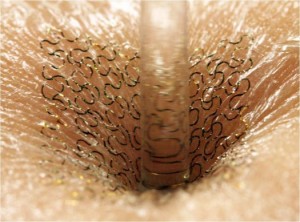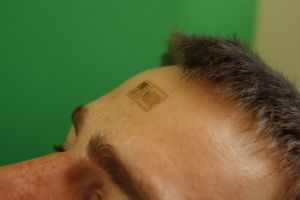Researchers led by John Rogers from the University of Illinois at Urbana-Champaign have developed the world’s first flexible, stretchable, and skin-like monitor, which is capable of attaching to the epidermis of the skin by a process similar to applying a temporary tattoo. This wireless device can accurately collect data from the human body for up to 6 hours without irritating the skin.

Inspired by the concept of telephone cords, this device features a netted S-shaped circuitry that can be greatly deformed without disturbing the function of the monitor. To make them even more durable, both sides are covered with protective layers of a polymer called polyimide. The device can be hidden under a tattoo to help it be concealed and remain attached longer. At the moment, long term use is limited because of surface skin cells sloughing off periodically.

In its current form, the device would be most applicable in the medical field because of its ability to be seamlessly integrated into the skin of patients to monitor their activity constantly. By placing them in different locations on the body, medical staff could collect different electrical signals from the body such as brain waves, heart beats and skeletal muscle activity. This new technology is especially useful for premature babies because it could monitor their progress without any bulky electronics irritating their fragile skin.

Aside from the medical community, security groups and intelligence agencies such as the CIA are also developing an interest in this technology; slight changes to this technology could enable agents to communicate silently with a patch hidden on their throats. This kind of patch would sense muscle movements in the throat and silently transmit the messages via wireless waves. With the initial prototype developed by Dr. Rogers’ team, many changes can be made to this technology to create a virtually infinite number of adaptations in the future.
Watch the Youtube video describing the epidermal electronic below:
http://youtu.be/fl1VS_kONlQ